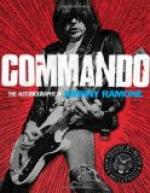On October 30 we were present, under Lucas Meyer, at the battle near Ladysmith, but we did not come into action, as we belonged to a part of the commando that had to hold a position to prevent attack in the rear. The enemy did not attack our position at all, except with a few bombs, because they suffered a great defeat near Modderspruit, and had to retreat hurriedly. From our positions we could see how every time the bombs burst among them the fleeing troops seemed to get ‘mazed’ for a moment, and then went forward again.
At that time we were often in want of food. One must have suffered hunger to know what it means. In a few linen bags I had some biscuits that had first been reduced to crumbs through the riding, and then to a kind of pap by the rain and perspiration of the horse. Often when I felt the pangs of famine I added some sugar to this mess and ate it with relish.
Some days later we left Lucas Meyer and returned to our commando, which had meanwhile gone to the north of Ladysmith. During our absence Zeederberg had taken the place of Melt Marais as Veld-Cornet.
II
SIEGE OF LADYSMITH—BATTLE OF THE ROOIRANDJES—BLOWING UP OF THE CANNON
When we surrounded the town and the siege began, all talk of the bananas that we were to eat in the south of Natal came to an end.
Ladysmith ought never to have been besieged. On October 30 we should have made use of our advantage. If we had at once followed the enemy when they fled in disorder, we should in all probability easily have taken those positions that would have involved the immediate surrender of Ladysmith. Many lives would have been sacrificed, but not so many as were sacrificed during the whole siege. And we might have used those men who were necessary to maintain the siege elsewhere as an attacking force. Instead of following up our advantage, we deliberately prepared for a siege. The enemy meanwhile made use of the opportunity to entrench themselves well. Most of our burghers were against our attempting to take the town by assault when once it was thoroughly entrenched.
The Pretoria town commando and that from Krokodil River in the Pretoria district occupied the position nearest to Ladysmith. This was a hill to the north of the town, flat at the top, and surrounded by a stone wall. In all probability the enclosed depression of about 500 paces in circuit had been used as a cattle-kraal. Against that kopje (hill) we gradually put up our tents. From our camp we looked on to a large flat mountain that we called Little Amajuba, because on October 30 the first large capture of prisoners had been made there. In front of our kopje, near the foot, ran a donga, and at a distance of about 1,000 paces, parallel to us, lay another oblong kopje occupied by the enemy. This kopje we called Rooirandjes.




